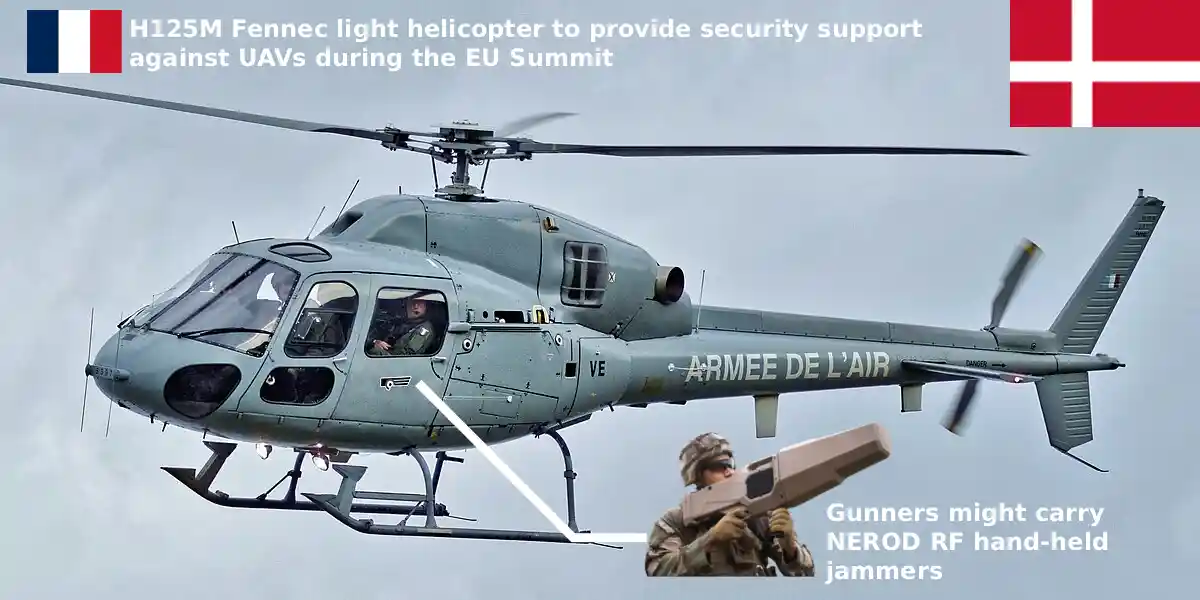In response to the recent incursions by unknown UAVs, which have disrupted the civilian air traffic, France will send a H125M helicopter and C-UAS crews.
The recent incursions by unknown UAVs, allegedly of Russian origin, into the Danish airspace have caused a mass disruption in the air traffic, which led to halts of airline flights and civilian unrest.
The timing, being close to the upcoming EU summit on the first day of October to be held in the capital of Denmark, Copenhagen, is also something to be noted. To boost the security at the summit, Denmark will ban any kind of UAV flights in its airspace.
To help with combating potential incursions during the summit, France will send a H125M Fennec helicopter and C-UAS crews, as reported by Zone Militaire
The H125M helicopter, to operate as part of a joint detachment, will carry two gunners who might carry NEROD RF hand-held jammers. The helicopter with hard-kill and soft-kill measures will act as a fast response, while the 35-unit C-UAS crew on the ground will be present at a certain place as defence.
Making a Mess without Explosives
The recent incursions, not long after the Polish airspace violation by Russian UAVs, are suggested to be of Russian origin as well. While the UAVs only loitered in the Danish airspace, the unrest shows that this is more than enough to cause harm without any combat payload.
Firstly, the presence of unauthorised UAV flights in civilian airspace threatens the regular airline flights with the risks of collision, which can have results that go as far as crashes into populated areas. This is why a hours-long halt was put in place for airlines.
Secondly, Europe, neighbouring the war, has closely witnessed the destruction that cheap long-range UAV attacks on civilian or military infrastructure can cause. A group of UAVs’ sudden incursion is likely aimed at putting a psychological pressure as well.
Author: Kaan Azman
Editor: Özgür Ekşi
Additionally, UAVs transmitting images/videos can allow the aggressor to obtain visual intelligence on the vulnerable points of critical infrastructure.
Firstly, the presence of unauthorised UAV flights in civilian airspace threatens the regular airline flights with the risks of collision, which can have results that go as far as crashes into populated areas. This is why a hours-long halt was put in place for airlines.
Secondly, Europe, neighbouring the war, has closely witnessed the destruction that cheap long-range UAV attacks on civilian or military infrastructure can cause. A group of UAVs’ sudden incursion is likely aimed at putting a psychological pressure as well.
Additionally, UAVs transmitting images/videos can allow the aggressor to obtain visual intelligence on the vulnerable points of critical infrastructure.
